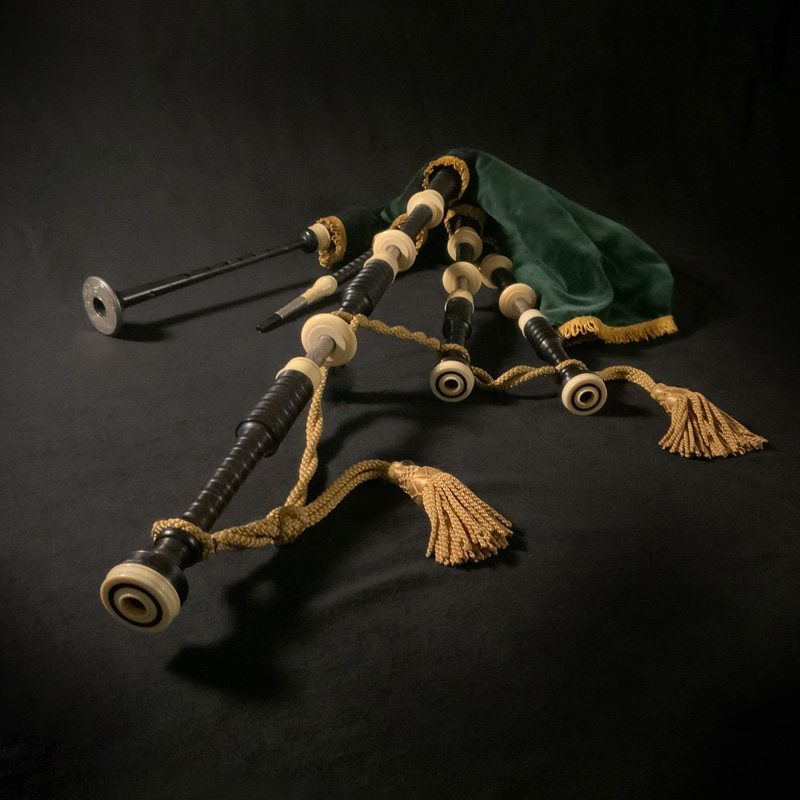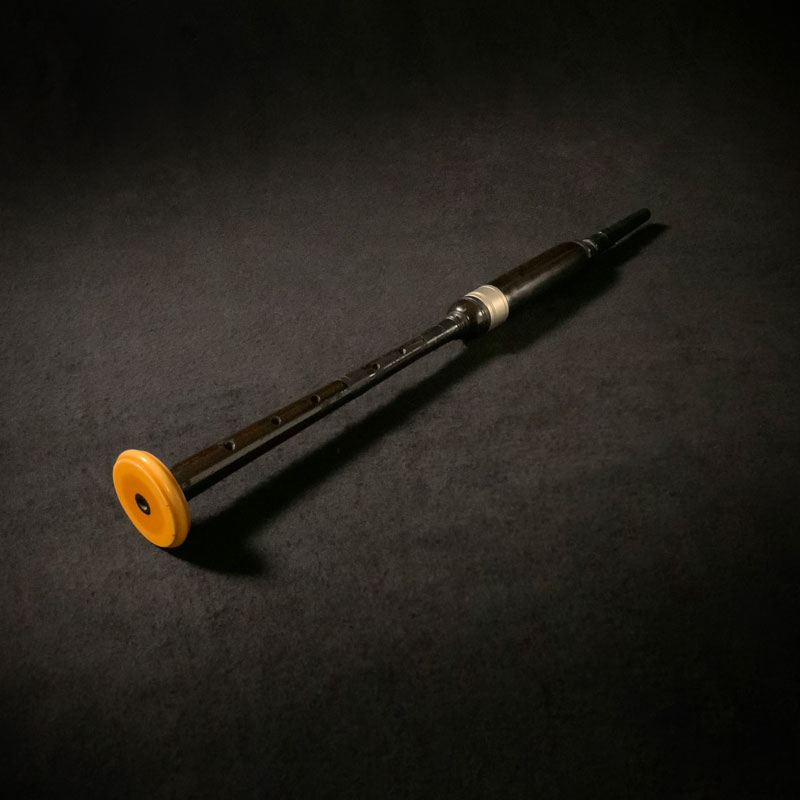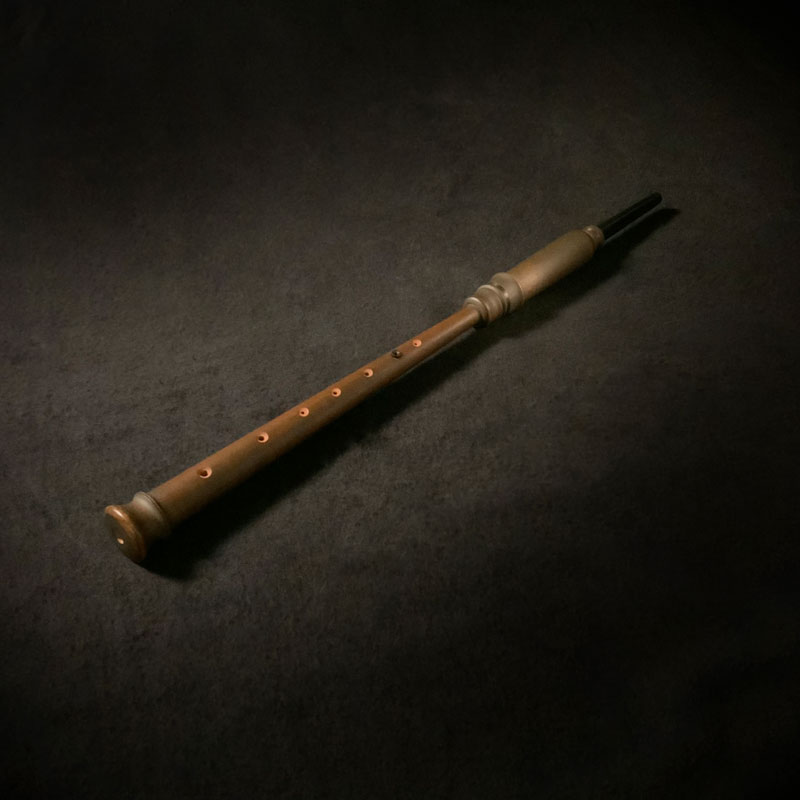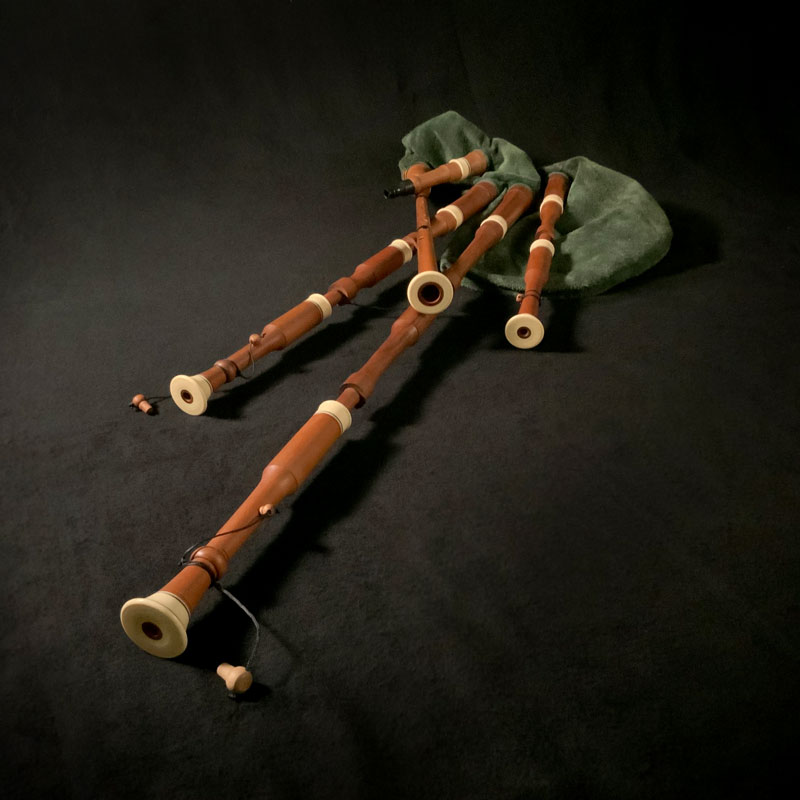Sounds
peeb comes with various bagpipe sounds, which you may all combine with your preferred fingering-system. In the following, we have portrayed the different sounds for you. The pitch of all of these bagpipes can be adjusted seamlessly an octave above and below their original pitch as of our ADVANCED upgrade.
We are constantly adding to our sound library – if a bagpipe sound dear to you is still missing, please let us know via our contact form.
Great Highland Bagpipe – in b
Henderson-Drones from c. 1910, matched with a wooden chanter made by Charley Kron. Full Cane. Known as “pìob mhor” in Scottish-Gaelic, the instrument has been – and still is – deeply embedded in the culture.
Practice Chanter – in b
Hümmelchen – in A & D
Marktsack – in A
A relatively modern German piping tradition, which has its roots in the former GDR. From the 1990s onwards it gained enormous popularity at so-called medieval markets all over Germany and beyond. We have incorporated a model made by Clemens Bieger for peeb.
Übungspfeife – in A
The “Übungspfeife” derived from the Scottish practice chanter in 2008 as a practice tool for players of the Marktsack at the Dudelsack-Akademie. For peeb we have chosen an “Übungspfeife” made by Marcel Cujé.
Pastoral Pipes – in D
The Pastoral Pipes arose in Scotland during the 18th century. They are considered as the ancestor of the Irish Uilleann Pipes. Jonathan Swayne made the model we have incorporated into peeb.
Scottish Smallpipes – in A
The Scottish Smallpipes offer a warm and mellow sound, that presents a lovely alternative and addition to players of the Scottish great Highland bagpipe. For peeb decided to incorporate the sound of a model made by Hamish Moore.
Borderpipes – in A
The borderpipes were originally played in the border region between Scotland and England, where many towns had their own “townpiper”. The model we sampled for peeb was made by the late Nigel Richard.
Shepherd Bagpipe – in G
The “Shepherd bagpipe” or “Schäferpfeife” is known in various shapes and forms all over Europe. Likewise to the “Hümmelchen”, it has been mentioned in Michael Praetorius “Syntagma musicum”. For peeb we chose to adopt an instrument made by Bodo Schulz.
Bohemian Bock – in F
The “Bock” occurs in various shapes and forms in Central Europe. Nowadays, the Bohemian Bock is mostly played in the Czech Republic. However, the instrument has also seen an uptake in Austria. There is a lovely figure of a bagpiper playing the Bohemian Bock in the Singing Fountain in Prague.
Asturian Gaita – in B flat & Galician Gaita – in C
The bagpipe is also deeply rooted on the Iberian Peninsula, especially in Asturias and Galicia. Their respective piping traditions are iconic aspects of their culture. The ‘gaita asturiana’ shown above was made by Miguel Alonso.
Parkapzuk – in C
The so-called ‘parkapzuk’ is a type of bagpipe played in Armenia. Its components vary: while it sometimes consists of a bag and a chanter only, it can also encompass a second chanter or a drone, which is then set in the same pitch as the chanter itself. The latter is the case with the instrument that we have adapted here.
Uilleann Pipes – in A
Providing two octaves – that are also available in peeb –, the Irish Uilleann Pipes eclipse most other bagpipe chanters in terms of their range. The instrument we sampled for our app was made by Andreas Rogge.












